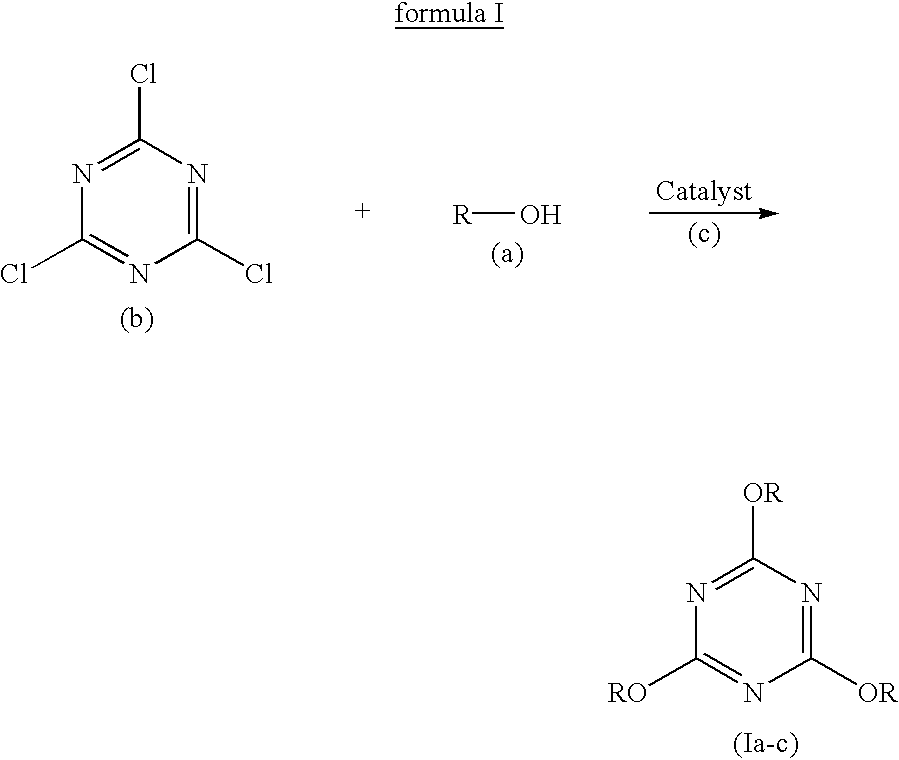Polyether polyols with increased functionality
a polyether polyol and functional technology, applied in the field of polyether polyols with increased functionality, can solve the problems of high explosiveness, process seriousness, and inapplicability, and achieve the effects of high functionality, increased reactivity toward isocyanates, and high functionality
- Summary
- Abstract
- Description
- Claims
- Application Information
AI Technical Summary
Benefits of technology
Problems solved by technology
Method used
Image
Examples
Embodiment Construction
The following Table illustrates the amount of materials used in Example 1 which were reacted according to the invention to form the high functional polyether polyol (i.e. Polyether Polyol 1).
Polyol A and Catalyst A were added to a reactor vessel and were heated for 30 minutes at 115.degree. C. under full ASP vacuum. Solvent A was then added to the vessel. Fifteen (15) minutes later, the cyanuric chloride was added in small dosages while the vessel was in an ice bath at 30.degree. C. After 30 minutes of adding the cyanuric chloride, the reaction solution was slowly heated for 1 hour to 90.degree. C. After the hour, the resulting solution was filtered. Solvent A was then distilled off at 150.degree. C.
To illustrate the increased reactivity of the resultant polyether polyols of the present invention vs. conventional polyether polyols, tests were conducted to determine the time required (from T=0) for Polyol A vs. Polyether Polyol 1 (produced in Example 1 above) to react with 4,4'-diphe...
PUM
| Property | Measurement | Unit |
|---|---|---|
| viscosities | aaaaa | aaaaa |
| viscosity | aaaaa | aaaaa |
| viscosity | aaaaa | aaaaa |
Abstract
Description
Claims
Application Information
 Login to View More
Login to View More - R&D
- Intellectual Property
- Life Sciences
- Materials
- Tech Scout
- Unparalleled Data Quality
- Higher Quality Content
- 60% Fewer Hallucinations
Browse by: Latest US Patents, China's latest patents, Technical Efficacy Thesaurus, Application Domain, Technology Topic, Popular Technical Reports.
© 2025 PatSnap. All rights reserved.Legal|Privacy policy|Modern Slavery Act Transparency Statement|Sitemap|About US| Contact US: help@patsnap.com



